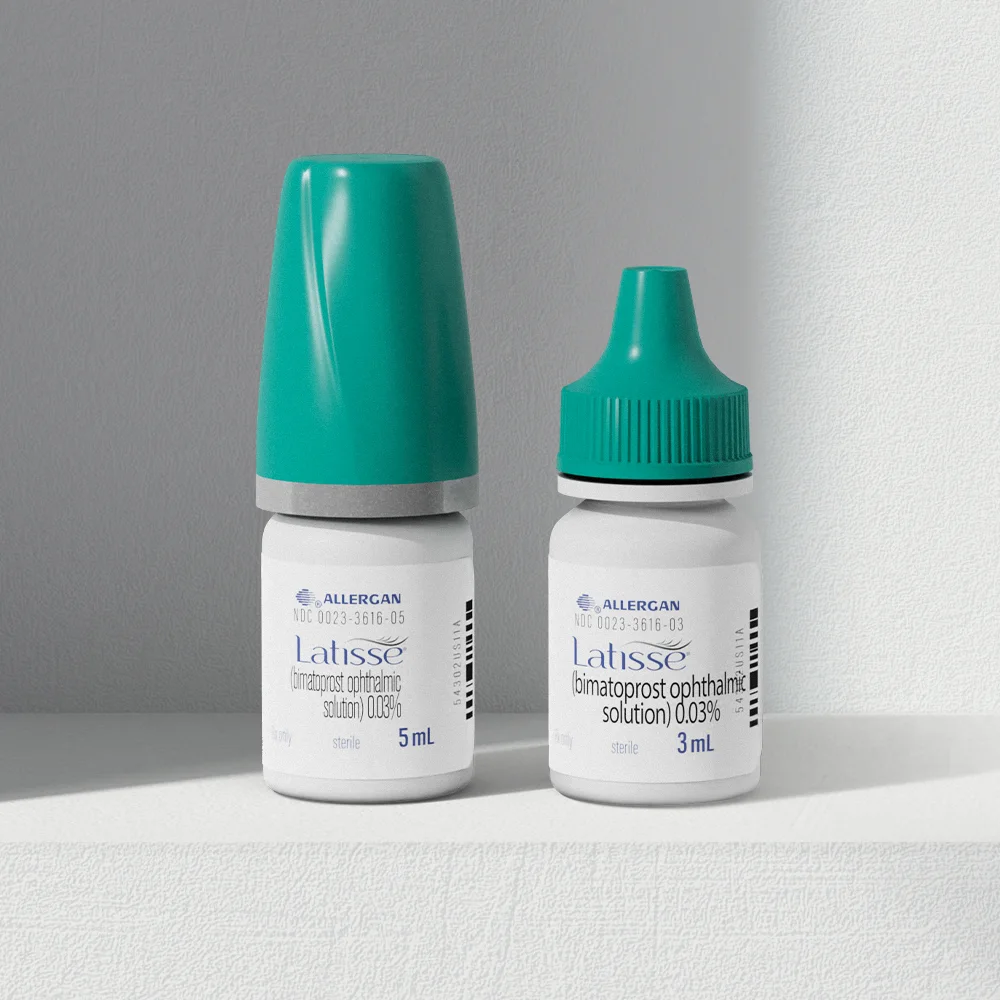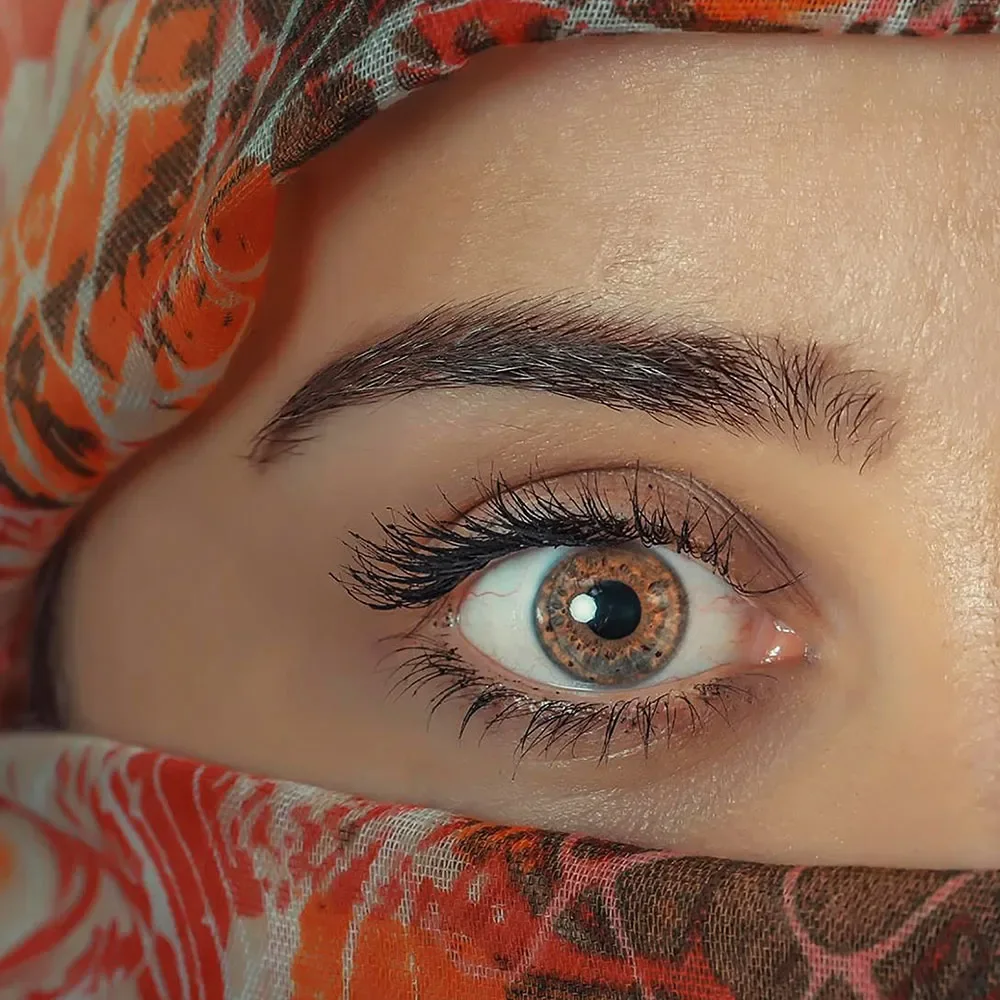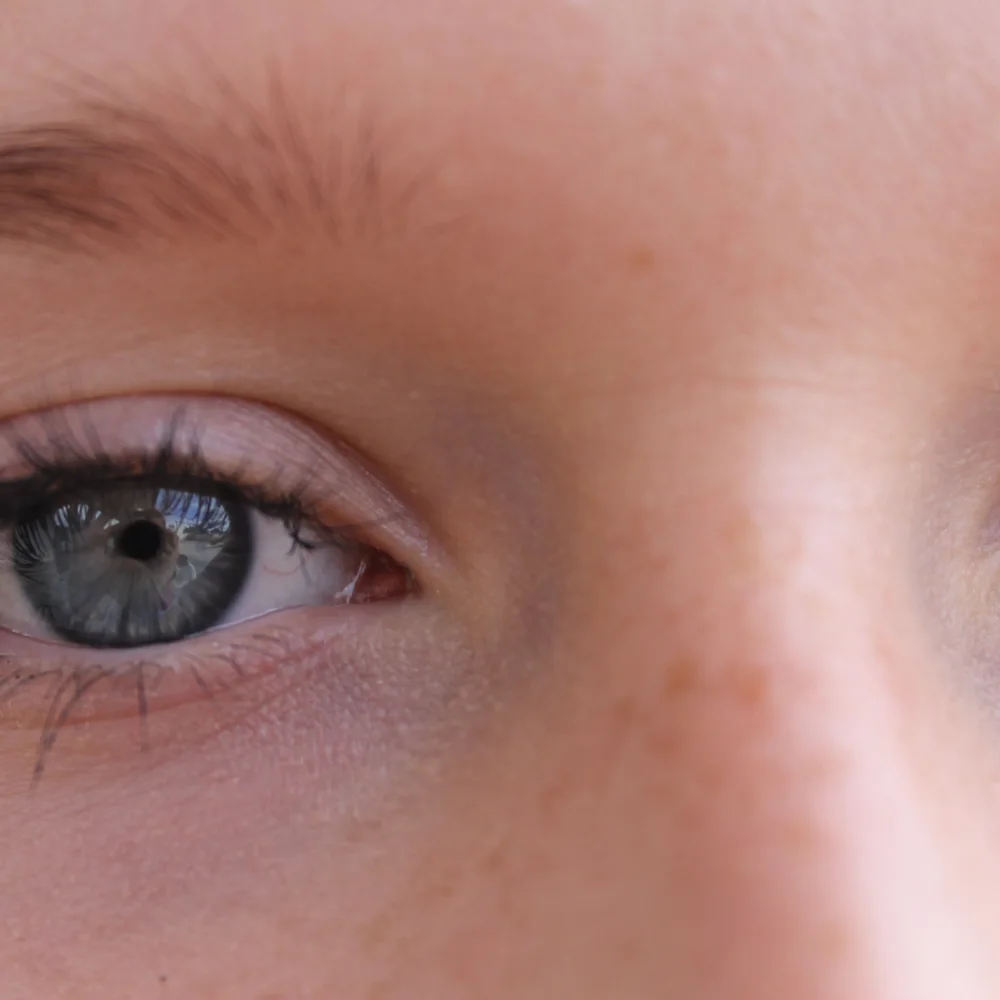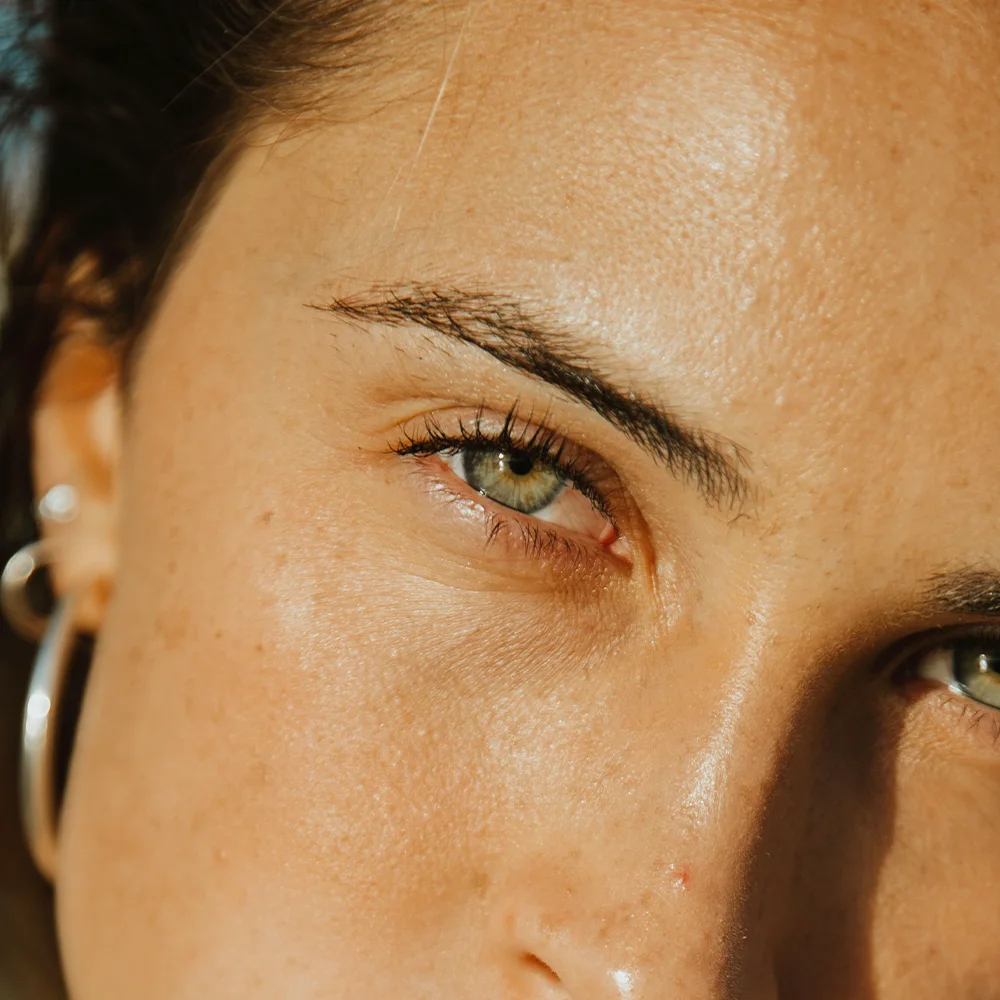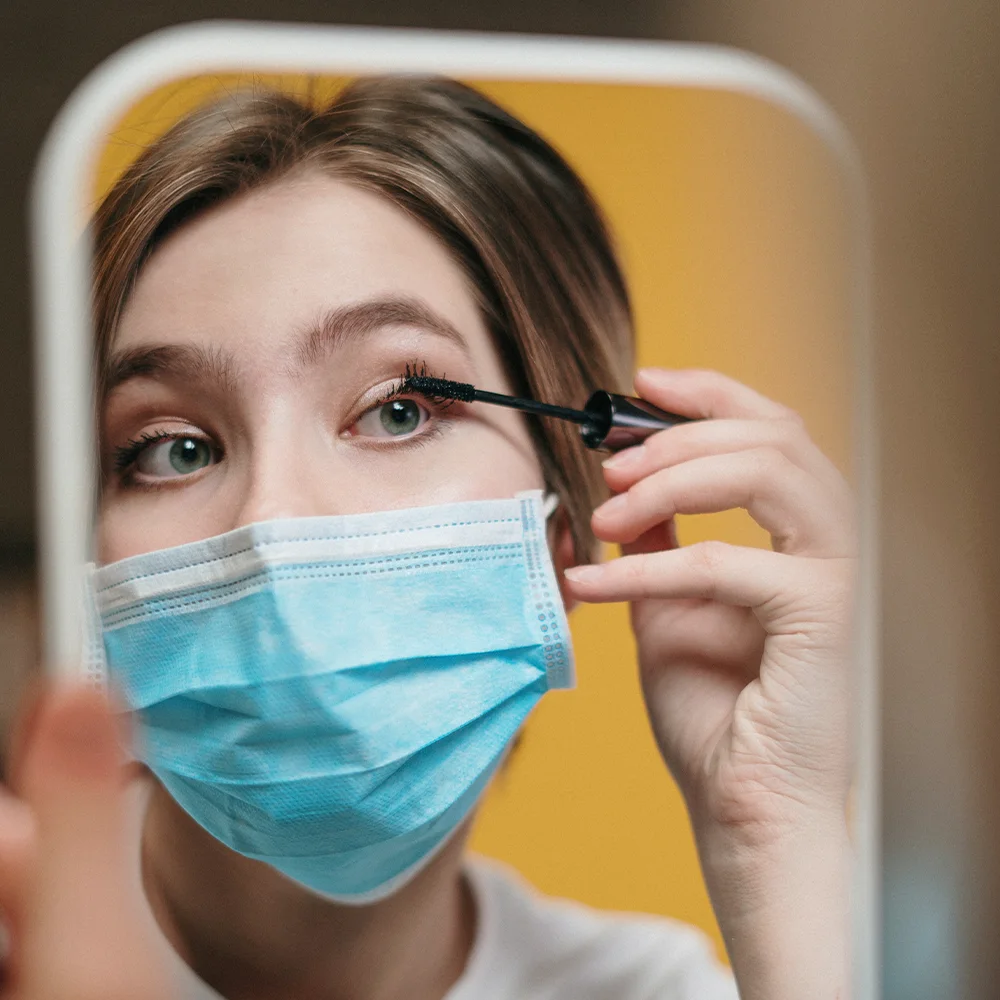Here's what we'll cover
Here's what we'll cover
Latisse is a medication that has been shown to help you increase the growth of your eyelashes. While it's a safe and effective treatment, it does have one unusual potential side effect.
Some people have reported a change in their eye color with the use of Latisse. Some even say that it made their blue eyes turn brown.
Is Latisse eye color change real? Is it as dramatic as people say? Will a color change cause any problems with your eyes?
What is Latisse?
Latisse, also known as bimatoprost ophthalmic solution 0.03%, was first approved by the U.S. Food and Drug Administration (FDA) in 2008 to grow thicker, fuller, and darker eyelashes in people with hypotrichosis (a lack of your own eyelashes) (Allergan Aesthetics, 2020). It's a prescription medication, so you should only use it under the supervision of a medical professional.
Just like the hair on your head, the hairs that make up your eyelashes grow in a cycle. This cycle includes periods of growth, resting, and shedding. Latisse is believed to extend the active growth phase of the hair cycle. This increased period of growth gives you thicker and longer lashes (Allergan Aesthetics, 2020).

Latisse comes as a liquid solution that you apply to the lash line of your upper eyelids. You apply it once a day, usually in the evening, with a special applicator. You should follow the directions for using Latisse very carefully. Using Latisse more often than once per day will not cause your eyelashes to grow any faster and may put you at more risk for side effects (U.S. National Library of Medicine, 2016)
Latisse works gradually. It can take about four weeks of daily use to start seeing results. It can take up to 16 weeks to see the maximum effects. You must continue to use Latisse daily, or the effects will fade away (Allergan Aesthetics, 2020).What is Latisse used for?
Latisse is approved to treat a condition called hypotrichosis of the eyelashes. Hypotrichosis is when you have less hair than usual on a part of the body. Latisse is the only known effective treatment for hypotrichosis of the eyelashes (Patel, 2021).
Although it isn’t FDA approved for this, Latisse has also been used off-label to treat hypotrichosis of the eyebrows or a lack of eyebrow hair. Multiple clinical trials have shown improvements in eyebrow growth, with minimal side effects (Chanasumon, 2018).
Does Latisse cause eye color change?
One potential side effect of using Latisse to encourage eyelash growth is a change in the colored part of the eye known as the iris, although it’s unclear how commonly it occurs. When a medication that’s similar to Latisse, latanoprost, is used to treat glaucoma, up to 10% of people using latanoprost will experience a darkening of the iris. However, latanoprost is dripped directly into the eyes when used to treat glaucoma, whereas Latisse is only applied to the eyelash line. This should mean that less Latisse actually touches the eye, and that fewer people using Latisse for eyelash growth should experience eye color change, although the exact incidence hasn’t been reported (Tripathy, 2021).
If eye color changes do occur when using Latisse for eyelash growth, they would be more common in people with green or hazel eyes. However, even people with light brown eyes may experience a darkening of their eye color (Tripathy, 2021).
The increased iris color pigmentation usually starts around the edge of the pupil. It then can spread across the iris. Iris nevi (eye freckles) and skin freckles aren’t affected. These changes usually begin within one year of starting therapy with Latisse. The longer you use the drug, the more the darkening will increase (Tripathy, 2021).
Is Latisse eye color change permanent?
The eye color changes brought on by Latisse are permanent, but it is only a cosmetic change. It doesn’t cause any medical problems with your eye. It generally isn’t a dramatic change either. You may be the only one who notices the difference (Tripathy, 2021).
Some people also experience pigment changes of the eyelids, skin around the eyes, and eyelashes. You can avoid this discoloration by carefully applying and wiping away any medication that gets on the skin. Color changes to the skin around the eye may fade away if you stop the drug (Tripathy, 2021).
Is Latisse safe and effective?
Multiple studies have found daily treatment with Latisse to be safe, effective, and well-tolerated for people with a lack of eyelashes due to chemotherapy or other causes (Glaser, 2015).
One clinical trial listed the side effects experienced by people using Latisse in the study. No one in the trial experienced any severe side effects, and most of the reported side effects were mild. Only 2.8% of the participants had to stop using Latisse due to side effects (Glaser, 2015).
The side effects of Latisse that caused participants to leave the study were reported as (Glaser, 2015):
Redness of the eyelid
Eye irritation
Allergic conjunctivitis
Enophthalmos (movement of the eyeball to the back of the orbit)
Eye itching
Dry eye
Eyelid crusting
Decreased pressure in the eye
Contact dermatitis
In the overall study population, inflammation of the conjunctiva (the lining of the eyelid), eyelid itching, redness, and inflammation of the cornea were the most common side effects reported. Most of these side effects went away by the end of the study. None needed any follow-up treatment (Glaser, 2015).
Participants who reported that their eyelashes were thin or missing due to chemotherapy were more likely to report inflammation of the conjunctiva (Glaser, 2015).
A change in eye color due to Latisse did not cause any participants to stop using the medication or leave the study.
What to know before using Latisse
No medication is a good fit for every person. There are some precautions that you and your healthcare provider should take and some things that you should know before starting Latisse (U.S. National Library of Medicine, 2016).
The active ingredient in Latisse (bimatoprost) is also used to treat increased pressure in the eyes from glaucoma. It is sold under the brand name Lumigan. If you use both together, you may take in too much medication.
Tell your healthcare provider if you are allergic to bimatoprost or any other medications.
Always tell your healthcare provider about what prescription and nonprescription medications, vitamins, nutritional supplements, and herbal products you are taking or plan to take in order to avoid any interactions.
There are similar medications to bimatoprost called latanoprost (Xalatan) and travoprost (Travatan). Tell your provider if you are taking either of these medications.
Tell your provider if you have ever had any eye conditions, illnesses, or infections, or if you develop these while on Latisse.
Tell your provider if you are pregnant, plan to become pregnant, or are breastfeeding. If you become pregnant while using Latisse, call your provider.
Latisse contains a preservative called benzalkonium chloride, which contact lenses can absorb. Remove your contact before applying Latisse and wait at least 15 minutes after applying before putting them back in.
DISCLAIMER
If you have any medical questions or concerns, please talk to your healthcare provider. The articles on Health Guide are underpinned by peer-reviewed research and information drawn from medical societies and governmental agencies. However, they are not a substitute for professional medical advice, diagnosis, or treatment.
Allergan Aesthetics. (2020). LATISSE® professional. LATISSE® (bimatoprost ophthalmic solution) 0.03%. Retrieved from https://professional.latisse.com/
Chanasumon, N., Sriphojanart, T., & Suchonwanit, P. (2018). Therapeutic potential of bimatoprost for the treatment of eyebrow hypotrichosis. Drug Design, Development and Therapy, 12, 365–372. doi: 10.2147/DDDT.S156467. Retrieved from https://www.ncbi.nlm.nih.gov/pmc/articles/PMC5826207/
Glaser, D. A., Hossain, P., Perkins, W., Griffiths, T., Ahluwalia, G., Weng, E., et al. (2015). Long-term safety and efficacy of bimatoprost solution 0·03% application to the eyelid margin for the treatment of idiopathic and chemotherapy-induced eyelash hypotrichosis: a randomized controlled trial. The British Journal Of Dermatology, 172 (5), 1384–1394. doi: 10.1111/bjd.13443. Retrieved from https://www.ncbi.nlm.nih.gov/pmc/articles/PMC4832276/
Patel BC, Joos ZP. (2021). Diseases of the eyelashes. [Updated 2021 Feb 25]. In: StatPearls [Internet]. Retrieved from https://www.ncbi.nlm.nih.gov/books/NBK537100/
Tripathy K, Geetha R. (2021). Latanoprost. [Updated 2021 May 23]. In: StatPearls [Internet]. Retrieved from https://www.ncbi.nlm.nih.gov/books/NBK540978/
U.S. National Library of Medicine. (2016). Bimatoprost topical: MEDLINEPLUS drug information. MedlinePlus . Retrieved from https://medlineplus.gov/druginfo/meds/a609009.html


